The Importance of Using a Tarp
Should you put a tarp under your tent? When camping, considering whether you should put a tarp under your tent is crucial. A tarp serves as a barrier between your tent and the ground. It protects the tent’s bottom from wear and tear against rough surfaces. It also ensures moisture from the ground doesn’t seep into your tent. This if often overlooked but can greatly improve your camping experience.
Tarps can extend the life of your tent. By shielding it from stones, sticks, and uneven grounds, a tarp prevents punctures and abrasions. This vital piece of equipment can save you the cost of frequent tent replacements.
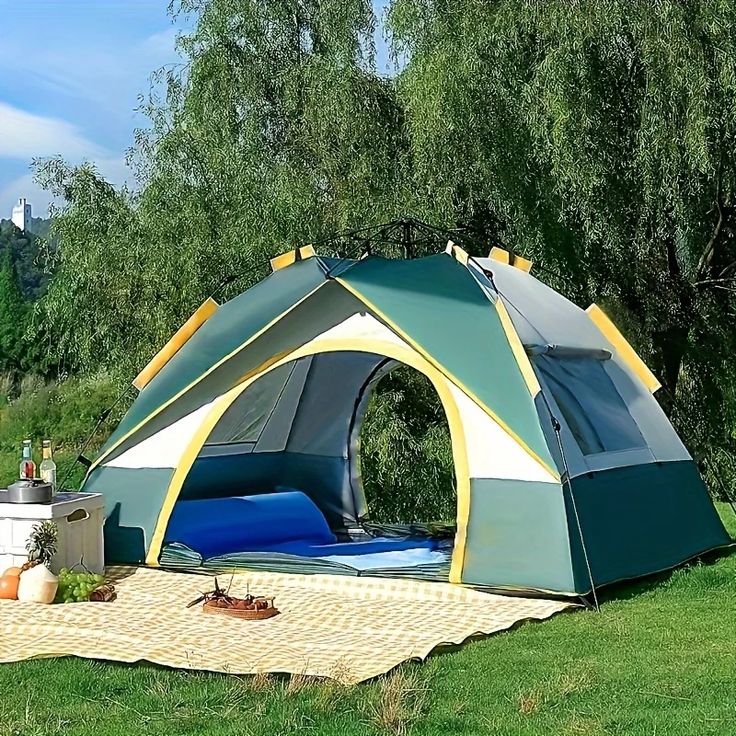
Using a tarp under your tent can also enhance campsite cleanliness. It keeps the tent’s base clean, which makes packing up quicker and reduces the need for tent cleaning later.
Moreover, in unpredictable weather, a tarp is your first defense. It can prevent water from entering your tent during rain. It helps in heat retention on chilly nights as the ground can sap warmth from your tent.
In summary, the importance of a tarp is multi-fold. It protects your tent, improves cleanliness, helps in weather insulation, and can save you money in the long run. An essential tool for any camper, a tarp should be on your packing list.
Selecting the Right Tarp for Your Tent
Choosing the right tarp for your tent is vital. You want a tarp that’s durable, waterproof, and of the right size. Think about the kind of camping you do. This will guide your choice. Here are key factors to consider when selecting a tarp.
Material Quality
Go for high-quality material. Polyethylene and ripstop nylon are popular. They offer resistance against tears and water. A good tarp withstands harsh conditions and lasts longer.
Size and Shape
Match the tarp size to your tent’s dimensions. It should cover the area under your tent but not stick out. A tarp that sticks out can collect water. This might lead to moisture issues.
Weight and Portability
If you hike to your campsite, a light tarp is best. It should be easy to pack and carry. But ensure it’s still sturdy enough to protect your tent.
Reinforced Edges and Grommets
Check for reinforced edges and sturdy grommets. These features help secure the tarp to the ground. They also prevent wear and make the tarp last longer.
Color and UV Resistance
A light-coloured tarp reflects sunlight, keeping your tent cooler. If camping in sunny spots, pick a tarp with UV resistance. It will prevent sun damage and extend the tarp’s lifespan.
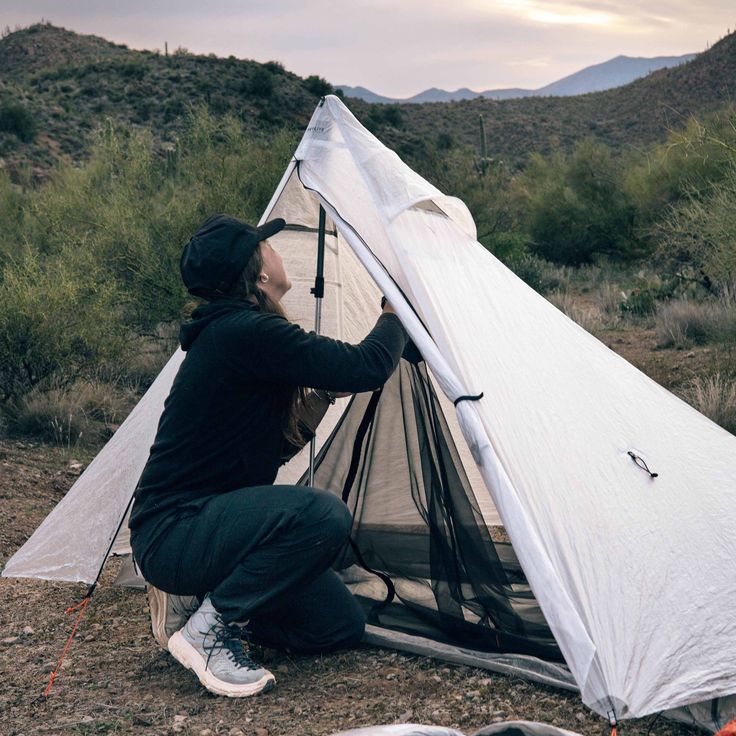
Price
Consider your budget but don’t compromise on quality. Sometimes, spending a little more upfront can save you money. A good tarp means less frequent replacements.
Remember to factor in these points when picking your tarp. The right tarp makes a big difference in your camping experience. It ensures your tent’s protection and your comfort under various situations.
How to Properly Place a Tarp Under Your Tent
Placing a tarp correctly under your tent can greatly enhance your camping experience. Here are some steps to ensure that you do it the right way:
- Clean the Site: Before laying the tarp, clear the tent area of any rocks, sticks, or sharp objects that could damage it.
- Lay It Flat: Spread the tarp out and make sure it lies flat on the ground. Avoid wrinkles or folds as they may collect water or cause unevenness.
- Align with Tent Dimensions: Position the tarp so that it matches the shape of your tent. The tarp should be slightly smaller than the tent’s footprint. This prevents water from pooling under your tent during rain.
- Secure the Tarp: If your tarp has grommets, use them to stake it to the ground. This will keep the tarp from moving under your tent.
- Fold Excess Edges: If the tarp extends beyond your tent’s edges, fold the excess material underneath the tent. This will ensure your tent remains dry and protected.
- Check for Water Runoff: Make sure the site has a slight slope for water to run off. This will prevent water from pooling under the tent.
By following these steps, you can successfully place a tarp under your tent. Doing so will protect your tent and keep you dry, ensuring a much more pleasant camping experience.
Tarp vs. Tent Footprint: What’s the Difference?
Understanding the difference between a tarp and a tent footprint is key for campers. Both serve a similar purpose but differ in features and use. A tarp is a versatile piece of equipment. You can use it under your tent or for other needs outside. It’s a separate accessory you must bring along. A tarp is larger and can serve as a shelter or ground cover.
A tent footprint is a custom-fit piece. It matches your tent’s shape and size. Tent footprints are lighter than tarps. They are for one job: protecting your tent’s bottom. A footprint is smaller and fits the tent exactly without extra material.
When deciding if you should put a tarp under your tent, think about other uses you might have. A tarp offers flexibility for various camping conditions. A footprint is solely a protective layer. It’s often less durable against rough terrain but perfect for lightweight camping.
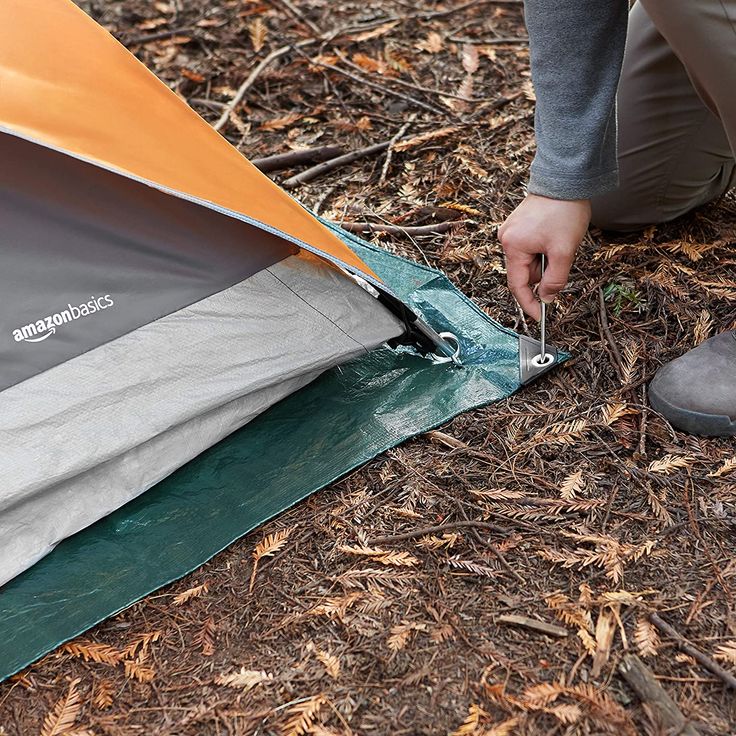
Choosing a tarp or tent footprint depends on your camping style. For rugged sites, a durable tarp is the way to go. For easier terrain and light travel, a footprint might suffice. Both options keep moisture away and protect your tent, enhancing your camping experience.
Benefits of Using a Tarp in Different Weather Conditions
Using a tarp under your tent provides comfort and security across various weather conditions. Here’s how a tarp can be beneficial in different scenarios:
During Rainfall
- Water Barrier: When it rains, a tarp serves as a crucial barrier that prevents water from seeping into your tent. This function protects the interior from becoming damp, ensuring a dry and comfortable living space.
- Dry Base: The tarp keeps the base of the tent dry, which is essential for maintaining a pleasant sleeping environment. By blocking rain water, it reduces the risk of mold and mildew forming inside the tent.
In Sunny Weather
- Reflective Properties: A reflective tarp can be an effective tool in sunny conditions. Its surface repels sunlight, preventing harsh rays from directly hitting your tent.
- Cooler Interior: By deflecting sunlight, the tarp aids in keeping the internal temperature of the tent cooler. This feature is particularly beneficial during hot summer months, allowing for a more enjoyable camping experience.
When It’s Windy
- Stability in Strong Winds: In windy conditions, a sturdy tarp can be a lifesaver. When properly anchored with grommets, it provides added stability to the tent, helping prevent any unwanted shifts.
- Acting as an Anchor: The tarp essentially acts as an anchor against strong winds, minimizing the risk of the tent being moved or damaged. This additional protection creates a safer camping environment during tempestuous weather.
On Snowy Days
- Insulation Layer: In snowy conditions, a tarp serves another vital purpose. It acts as an insulation layer, blocking cold air from rising up from the snowy ground into the tent.
- Temperature Maintenance: This insulation helps maintain a comfortable indoor temperature, which is particularly important for camping in winter settings. By reducing cold drafts, it makes the space more inviting and cozy.
During Chilly Nights
- Heat Retention: On chilly nights, adding a tarp beneath your tent creates a layer of separation from the cold ground, enhancing the retention of heat inside.
- Comfortable Sleeping Environment: By effectively blocking the cold, the tarp helps create a warmer sleeping environment, allowing campers to rest better even in cooler temperatures. This extra layer contributes to a more pleasant overall camping experience.
Using a tarp under your tent ensures you are prepared for whatever weather comes your way. With the right tarp, your camping trip can stay comfortable in rain, shine, or snow, making it a must-have for any outdoor adventure.
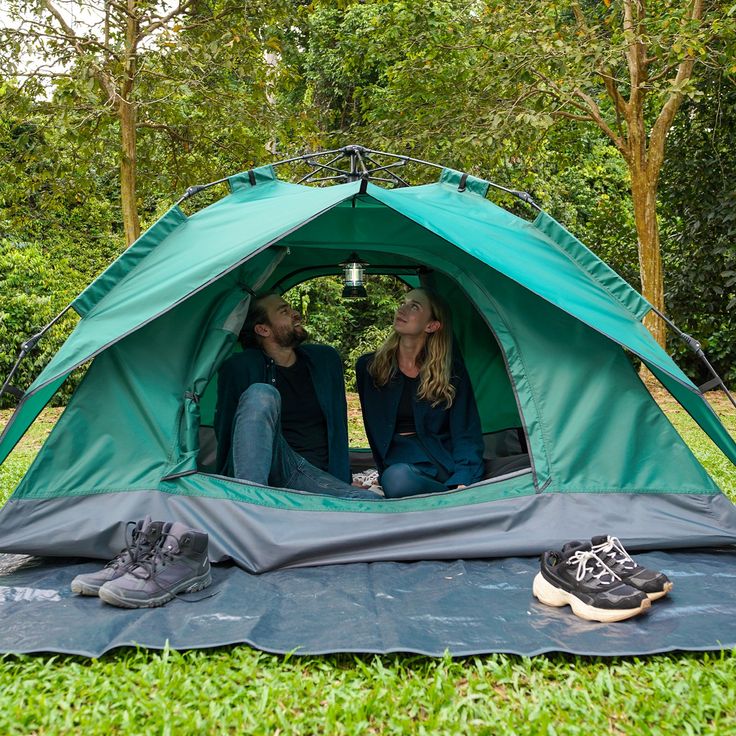
Tarp Maintenance and Care Tips
To extend your tarp’s life and maintain its effectiveness, follow these simple care tips.
- Clean Regularly: After each use, shake off any debris. Wash the tarp with mild soap and water if needed.
- Dry Completely: Before storing, ensure the tarp is fully dry. This prevents mildew and mold growth.
- Store Safely: Fold the tarp neatly and store in a cool, dry place. Avoid places where rodents or insects could damage it.
- Inspect for Damage: Check for tears or holes regularly. Repair them promptly to avoid further damage.
- Avoid Sun Damage: When not in use, keep the tarp out of direct sunlight. UV rays can weaken the material over time.
- Use Properly: Don’t drag the tarp over rough surfaces. This can cause unnecessary wear and tear.
- Follow Manufacturer’s Instructions: Each tarp is different. Stick to the care guidelines provided by the manufacturer for the best results.
By taking care of your tarp, you ensure it will be ready when you need it most. Proper maintenance helps in saving money and reduces the need for frequent replacements. Remember, a well-cared-for tarp is vital for a comfortable and hassle-free camping experience.
Impact of Tarps on the Environment
Using tarps has an environmental impact that we should consider. Here’s why it matters:
- Material Choice: Tarps made from polyethylene contribute to plastic waste. We should choose recycled materials.
- Longevity: A durable tarp means less waste. We should invest in tarps that last longer.
- Disposal: Proper disposal is crucial. We should recycle tarps instead of sending them to landfills.
- Production Footprint: The manufacturing of tarps uses resources and energy. We should support eco-friendly brands.
- Wildlife Protection: Tarps can shield the ground from damage, helping to protect local flora and fauna.
- Chemical Runoff: Some tarps can leak harmful chemicals into the soil. We should opt for non-toxic options.
By understanding these points, we can make better choices. We should aim for sustainability in our camping gear. This includes being mindful of the tarps we use. It’s not just about ‘should you put a tarp under your tent’. It’s also about how that choice affects the world around us. Let’s choose tarps that do less harm to our environment.
Top Tarp Recommendations for Campers in 2025
Finding the right tarp can make or break your camping trip. Here are top recommendations for 2025. These tarps stand out for quality, durability, and eco-friendliness.
- Eco-Cover Pro Tarp: Made with recycled materials, this tarp is tough and eco-friendly. It’s waterproof and comes with reinforced grommets.
- UltraShield Canvas Tarp: Perfect for all weather, it repels water and resists UV rays. It’s built to last and very reliable.
- HikeGuardian Lightweight Tarp: Ideal for backpackers, it’s super light yet durable. Easy to pack, it fits into any hiking bag.
- CampShield Heavy-Duty Tarp: Strong and perfect for rough terrain. This tarp withstands sticks, stones, and extreme weather.
- NatureSafe Reflective Tarp: This tarp keeps your tent cool in the sun. It reflects light and provides excellent insulation.
- AquaBlocker Tarp: Best for rainy conditions. It ensures no water gets under your tent. With sealed edges, it’s the best water barrier.
These tarps are leaders for 2025. They match various camping scenarios and protect your tent. Remember, when shopping for a tarp, think about your specific camping needs. Consider the size, material, and the kind of trips you take.
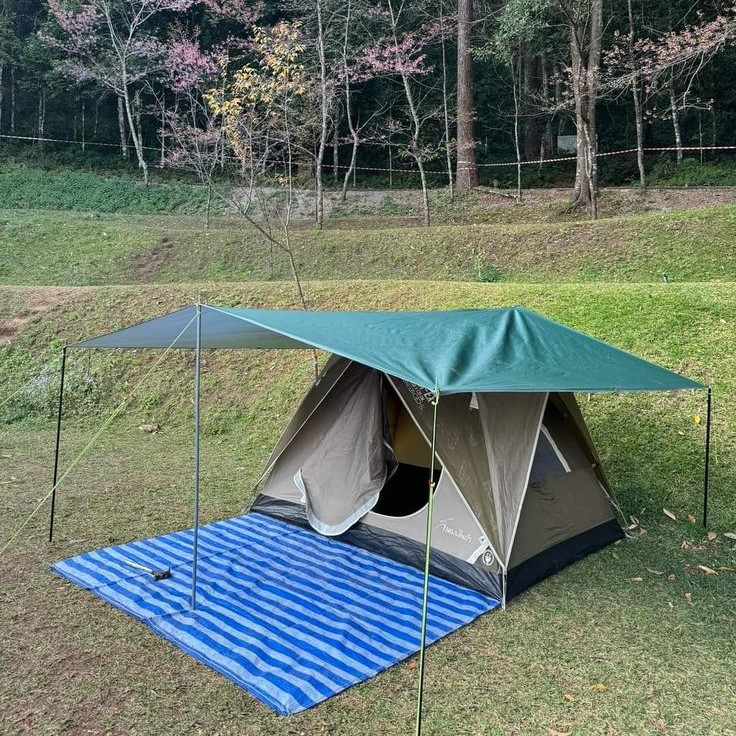
With the right tarp under your tent, you set the stage for a fantastic outdoor adventure. It keeps you dry, warm, and worry-free. Choose wisely and enjoy the comfort and peace of mind on your next camping trip.
Conclusion: Should You Put a Tarp Under Your Tent?
Ultimately, the question of should you put a tarp under your tent comes down to personal preference and camping conditions. If you anticipate wet weather, a tarp can make a significant difference in staying dry and comfortable.
Additionally, using a tarp can protect your tent from ground debris, extending its lifespan. Consider your camping environment and choose the right materials and setup. With these considerations, you can fully enjoy your camping experience in 2025 and beyond.
Whether you opt for a tarp or a tent-specific ground cloth, ensuring a dry and secure sleeping area is essential for a successful outdoor adventure.